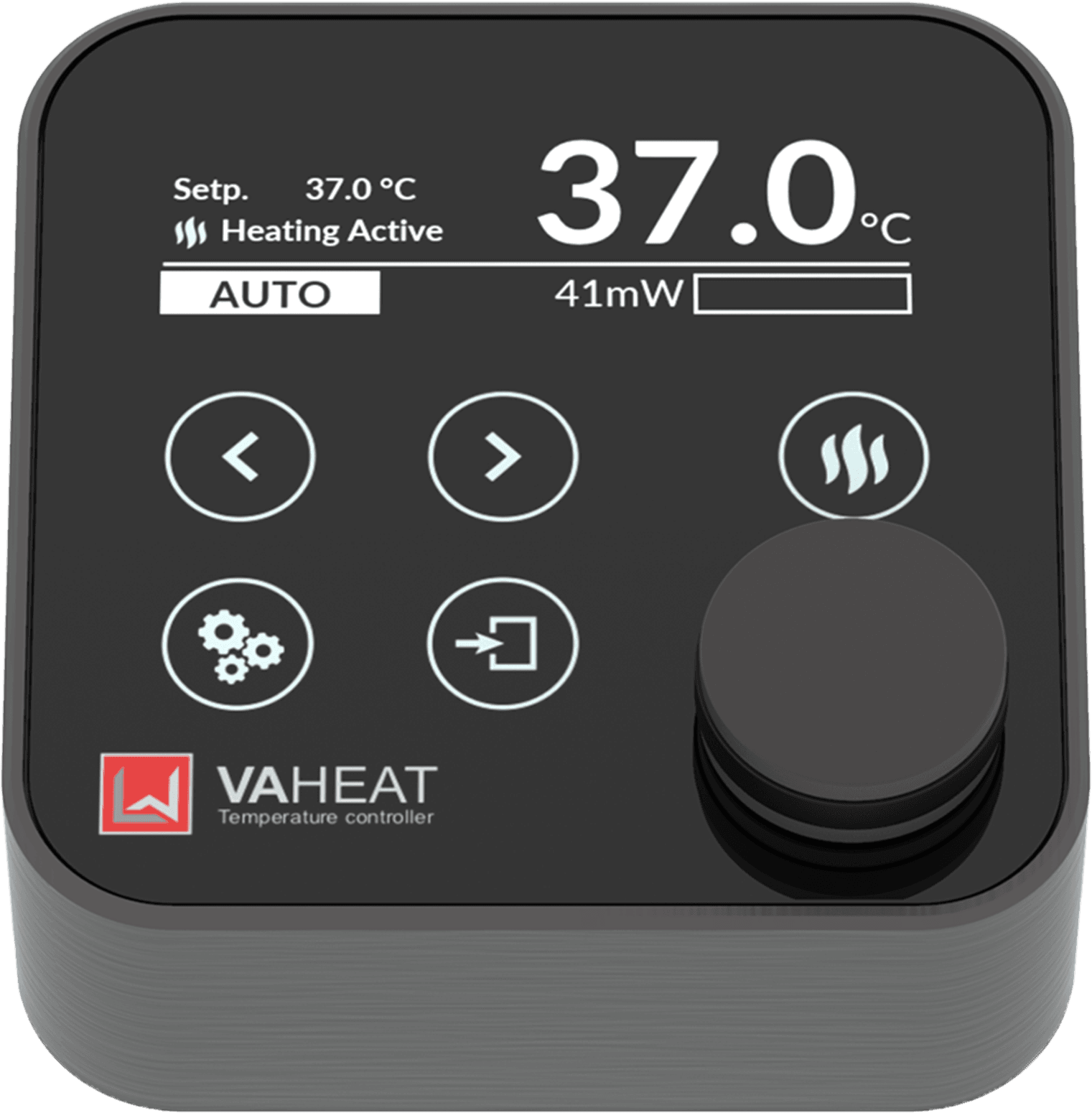Explore our
VaHeat®

Highly modular system design
VAHEAT lets you control the temperature inside the field-of-view (FOV) independently from the type of microscope objective or the objective’s temperature. The system is designed as standalone unit without the need for any additional modifications to the optical setup (e.g objective heater) in order to avoid a temperature sink in your field of view.

0.01 °C (rms)
Unbiased temperature feedback
No more heatsinks in your field-of-view – VAHEAT utilizes Smart Substrates to integrate a temperature probe directly into your sample volume, ensuring unparalleled temperature precision and real-time feedback with a precision as low as 0.01 °C (rms).
80 °C
Diffraction-limited even at high temperatures
Achieve no optical aberration up to 80°C, even with the highest numerical aperture objectives without damaging them, thanks to our monolithic system design. Ideal for single-molecule, super-resolution, and extreme condition studies. For more details, see Technical Performance.
Rapid temperature control
VAHEAT enables swift changes in sample temperature, reaching rates of up to 100 °C/s for heating and -20 °C/s for cooling. This allows for precise, real-time studies of temperature sensitive processes.

Mechanical stability and device compatibility
VAHEAT ensures no thermal drifts or vibrations, even at elevated temperatures, allowing precise single-molecule localization. Designed for compatibility with all commercial microscopes, VAHEAT requires no additional setup modifications. Its rapid thermal response significantly reduces waiting times compared to conventional heating systems.
High-temperature imaging
Expand your experimental temperature range to 100°C (standard) or up to
200°C (extended) based on your research needs.
The standard version is compatible with oil-immersion systems, while the extended version is designed for use with air objectives.
Smart Substrates
Standard Range SMS-PControl Unit

- Dimensions: 18x18x0.17 (± 0.05) mm³
- Heat area: 5×5 mm² or 10×12 mm²
- Temp. range: RT 105°C
- Absolute temperature precision <0.1°C
- The standard range smart substrates are optimized for high-resolution studies similar to #1.5 coverslips. They have a size of 18 x 18 mm² and a thickness of 170 µm. We specify their full functionality up to 100 °C with heating powers up to 2.5 W. Your sample can be mounted using reservoirs, flow chambers or even your microfluidic device.
Extended Range SMS-ESmart Substrates

- Dimension: 18x18x0.5 mm³
- Heat area: 5×5 mm²
- Temp. range: RT – 200°C
- Absolute temperature precision: <0.5 °C
- The extended range smart substrates are made for temperatures up to 200 °C. They are 500 µm thick, similar to #5 coverslips and are compatible with the extended range control unit. Also here multiple configurations for mounting your sample are available.
The Control Unit


Standard RangeControl Unit
The standard range version is meant for studies up to 105 °C. The maximal heating power of 2500 mW is more than enough to ensure thermalization of up to 600 μL sample volume within a few seconds. This system is optimally suited to study live cells or other temperature sensitive processes with high- and super-resolution microscopes.
- PropertiesStandard Range
- Heating Power<2500 mW
- Max temperature105 °C
- ApplicationsLife sciences
Extended RangeControl Unit
The extended range version is meant for studies up to 200 °C. The maximal heating power of 5000 mW boosts your sample temperature to your desired setpoint even when larger thermal loads are attached. This system is made for investigations using air spaced microscope objective for studying e.g. phase transitions or diffusional behavior.
- PropertiesExtended Range
- Heating Power<5000 mW
- Max temperature200 °C
- ApplicationsLife Sciences + Material Sciences + Fast dynamics
VaHeat can be operated in four different modes that will ideally fit your experimental needs.































































